
Anesthesia or anaesthesia is a state of controlled, temporary loss of sensation or awareness that is induced for medical or veterinary purposes. It may include some or all of analgesia, paralysis, amnesia, and unconsciousness. An individual under the effects of anesthetic drugs is referred to as being anesthetized.

Isoflurane, sold under the brand name Forane among others, is a general anesthetic. It can be used to start or maintain anesthesia; however, other medications are often used to start anesthesia, due to airway irritation with isoflurane. Isoflurane is given via inhalation.

Crawford Williamson Long was an American surgeon and pharmacist best known for his first use of inhaled sulfuric ether as an anesthetic.

The Ether Dome is a surgical operating amphitheater in the Bulfinch Building at Massachusetts General Hospital in Boston, United States. It served as the hospital's operating room from its opening in 1821 until 1867. It was the site of the first public demonstration of the use of inhaled ether as a surgical anesthetic on October 16, 1846, otherwise known as Ether Day. Crawford Long, a surgeon in Georgia, had previously administered sulfuric ether in 1842, but this went unpublished until 1849. The Ether Dome event occurred when William Thomas Green Morton, a local dentist, used ether to anesthetize Edward Gilbert Abbott. John Collins Warren, the first dean of Harvard Medical School, then painlessly removed part of a tumor from Abbott's neck. After Warren had finished, and Abbott regained consciousness, Warren asked the patient how he felt. Reportedly, Abbott said, "Feels as if my neck's been scratched". Warren then turned to his medical audience and uttered "Gentlemen, this is no Humbug". This was presumably a reference to the unsuccessful demonstration of nitrous oxide anesthesia by Horace Wells in the same theater the previous year, which was ended by cries of "Humbug!" after the patient groaned with pain.
The year 1846 in science and technology involved some significant events, listed below.
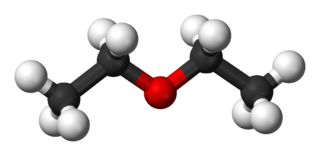
Diethyl ether, or simply ether, is an organic compound with the chemical formula (CH3CH2)2O, sometimes abbreviated as Et2O. It is a colourless, highly volatile, sweet-smelling, extremely flammable liquid. It belongs to the ether class of organic compounds. It is a common solvent. It was formerly used as a general anesthetic.
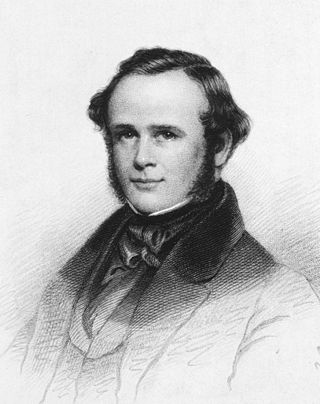
Horace Wells was an American dentist who pioneered the use of anesthesia in medicine, specifically the use of nitrous oxide.
Oral and maxillofacial surgery is a surgical specialty focusing on reconstructive surgery of the face, facial trauma surgery, the mouth, head and neck, and jaws, as well as facial plastic surgery including cleft lip and cleft palate surgery.

An inhalational anesthetic is a chemical compound possessing general anesthetic properties that is delivered via inhalation. They are administered through a face mask, laryngeal mask airway or tracheal tube connected to an anesthetic vaporiser and an anesthetic delivery system. Agents of significant contemporary clinical interest include volatile anesthetic agents such as isoflurane, sevoflurane and desflurane, as well as certain anesthetic gases such as nitrous oxide and xenon.

Southworth & Hawes was an early photographic firm in Boston, 1843–1863. Its partners, Albert Sands Southworth (1811–1894) and Josiah Johnson Hawes (1808–1901), have been hailed as the first great American masters of photography, whose work elevated photographic portraits to the level of fine art. Their images are prominent in every major book and collection of early American photography.

John Collins Warren was an American surgeon. He was a founder of the New England Journal of Medicine and was the third president of the American Medical Association. He was the first Dean of Harvard Medical School and a founding member of the Massachusetts General Hospital. In 1846 he gave permission to William T.G. Morton to provide ether anesthesia while Warren performed a minor surgical procedure. News of this first public demonstration of surgical anesthesia quickly circulated around the world.

Nathan Cooley Keep (1800–1875) was a pioneer in the field of dentistry, and the founding Dean of the Harvard School of Dental Medicine.
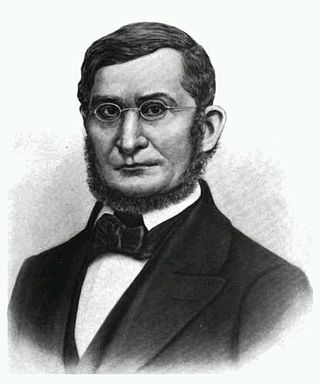
Charles Thomas Jackson was an American physician and scientist who was active in medicine, chemistry, mineralogy, and geology.
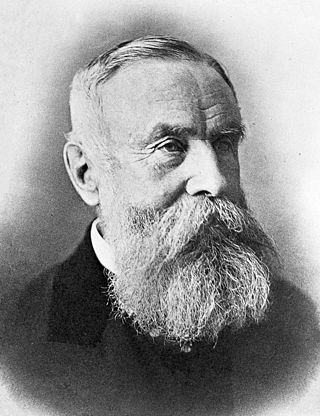
Henry Jacob Bigelow was an American surgeon and Professor of Surgery at Harvard University. A dominating figure in Boston medicine for many decades, he is remembered for the Bigelow maneuver for hip dislocation, a technique for treatment of kidney stones, and other innovations. He was instrumental in bringing the anesthetic possibilities of ether to the attention of medical men, and rescuing the case of Phineas Gage from relative obscurity. He was a vocal opponent of vivisection, and played a minor role in the apprehension of the culprit in the Parkman–Webster murder case.
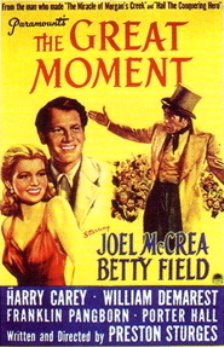
The Great Moment is a 1944 biographical film written and directed by Preston Sturges. Based on the book Triumph Over Pain (1940) by René Fülöp-Miller, it tells the story of Dr. William Thomas Green Morton, a 19th-century Boston dentist who discovered the use of ether for general anesthesia. The film stars Joel McCrea and Betty Field, and features Harry Carey, William Demarest, Franklin Pangborn and Porter Hall.

The Ether Monument, also known as The Good Samaritan, is a statue and fountain near the northwest corner of Boston's Public Garden, near the intersection of Arlington Street and Marlborough Street.

Edward Gilbert Abbott (1825–1855) was the patient upon whom William T. G. Morton first publicly demonstrated the use of ether as a surgical anesthetic. The operation was done in an amphitheater at the Massachusetts General Hospital now known as the Ether Dome on 16 October 1846. After Morton administered the ether, surgeon John Collins Warren removed a portion of a tumor from Abbott's neck. After Warren had finished, and Abbott regained consciousness, Warren asked the patient how he felt. Reportedly, Abbott said, "Feels as if my neck's been scratched." Warren then turned to his medical audience and uttered "Gentlemen, this is no Humbug." This was presumably a reference to the unsuccessful demonstration of nitrous oxide anesthesia by Horace Wells in the previous year, which was ended by cries of "Humbug!" after the patient groaned with pain. But the origin of the phrase is questionable, and Warren stated that he did not remember the Wells's demonstration until it was brought up by Wells himself in 1847.

Throughout recorded history, attempts at producing a state of general anesthesia can be traced back to the writings of ancient Sumerians, Babylonians, Assyrians, Akkadians, Egyptians, Persians, Indians, and Chinese.
Obstetric anesthesia or obstetric anesthesiology, also known as ob-gyn anesthesia or ob-gyn anesthesiology, is a sub-specialty of anesthesiology that provides peripartum pain relief (analgesia) for labor and anesthesia for cesarean deliveries ('C-sections').

James Robinson was a British dentist and anaesthetist. On 19 December 1846, he became the first person to carry out general anaesthesia in Britain when he administered ether to a patient undergoing a tooth extraction. The next year, he published A Treatise on the Inhalation of the Vapour of Ether, perhaps the first textbook of anaesthesia. Robinson's work influenced the prominent anaesthetist John Snow. Robinson also undertook initiatives to reform the dental profession in Britain. At the age of 48, he died of blood loss following a gardening accident; his London home, as well as the site where he first administered anaesthesia, are commemorated with plaques.



















